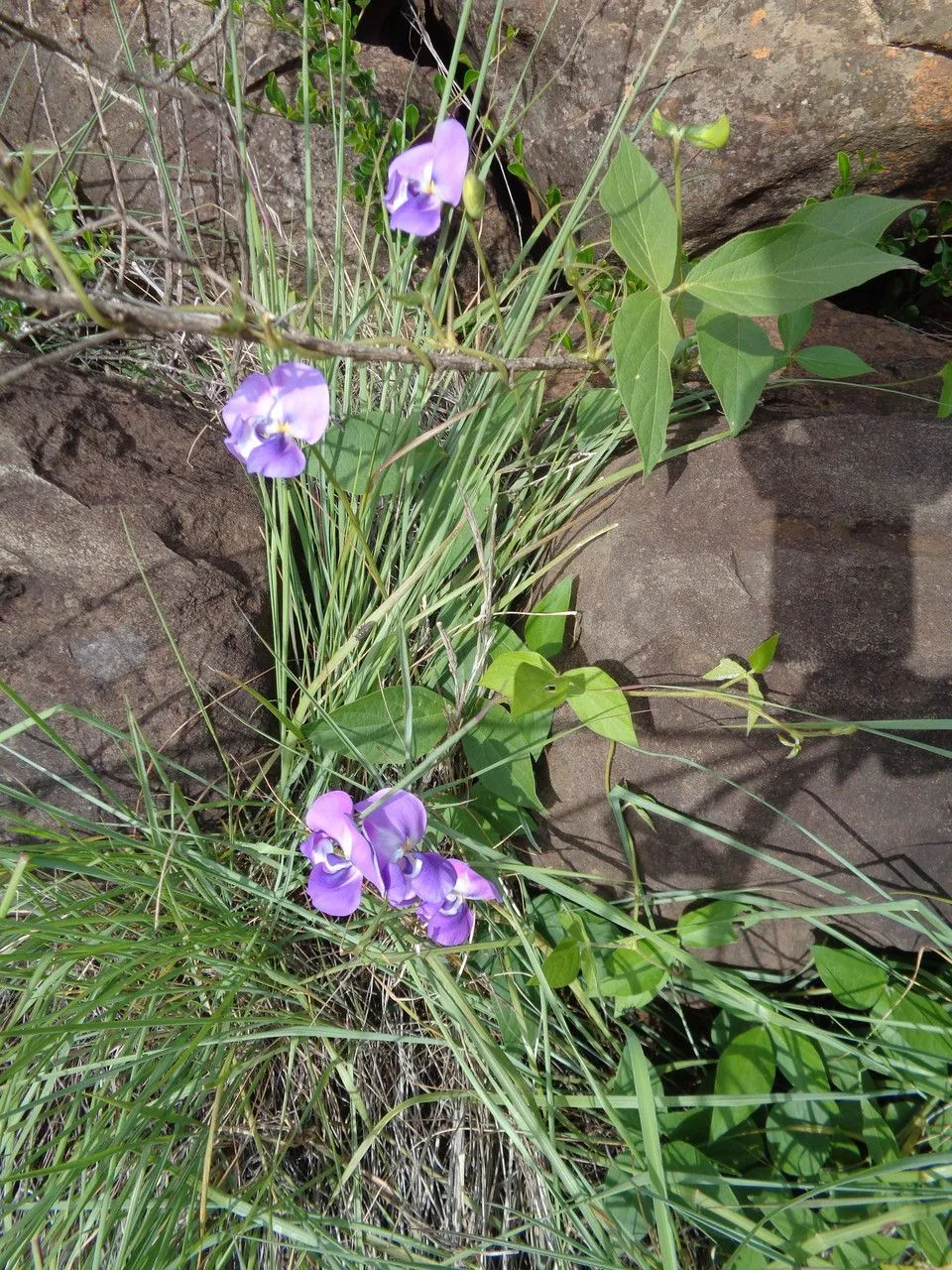
Author: (L.) A.Rich.
Bibliography: R.de la Sagra, Hist. Fis. Cuba, Bot. 10: 191 (1845)
Year: 1845
Status: accepted
Rank: species
Genus: Vigna
Vegetable: False
Observations: Tropics & Subtropics
Zombi pea, known scientifically as Vigna vexillata, is a fascinating plant that belongs to the Fabaceae family. Described in detail by R.de la Sagra in the “Historia Física de Cuba: Botánica” in 1845, and attributed to the author (L.) A.Rich., this species thrives predominantly in tropical and subtropical regions around the globe.
The zombi pea is a resilient and versatile plant, often found in a variety of landscapes within its preferred climates. It exhibits characteristic traits common to many members of the Fabaceae family, such as a climbing or trailing habit, which allows it to adapt to different environmental conditions and support structures.
Remarkably, Vigna vexillata has developed several adaptations to flourish in its natural habitats. These include nitrogen-fixing root nodules that enable it to thrive in soils with low fertility, a trait that not only benefits the plant itself but also enhances soil quality, aiding other vegetation. The presence of these nodules also underscores the plant’s ecological importance in improving soil health and promoting sustainable agriculture.
In appearance, the zombi pea can be identified by its distinct pods and flowers. The flowers are typically vibrant, attracting various pollinators, which play a crucial role in the plant’s reproductive cycle. The resulting seeds are contained within pods, which can disperse naturally to give rise to new plants, ensuring the continued propagation of the species.
Given its robustness and adaptability, the zombi pea is often studied for its potential applications in agriculture, particularly in regions facing challenging growing conditions. Its ability to improve soil nitrogen levels presents an opportunity to integrate it into crop rotation and intercropping systems, potentially improving yields and sustainability.
In summary, Vigna vexillata, or the zombi pea, is more than just a plant; it is an essential component of agricultural ecosystems in tropical and subtropical regions. Its unique properties and ecological benefits make it a subject of ongoing interest and research in botanical and agricultural fields.
Eng: zombi pea, wild cowpea, zombi-pea
Fra: pois poison, pois zombi
En: Zombi pea, Wild cowpea, Zombi-pea
Af: Wilde ertjie
Fr: Pois poison, Pois zombi
Taken Sep 8, 2022 by Saurabh Wadye (cc-by-sa)
Taken Jan 23, 2020 by Ryan Riessen (cc-by-sa)
Taken Mar 15, 2021 by Anthony Cauzit (cc-by-sa)
Taken Mar 15, 2021 by Anthony Cauzit (cc-by-sa)
Taken Jun 17, 2022 by Nicola Morphey (cc-by-sa)
Taken Jan 22, 2020 by susan brown (cc-by-sa)
Taken Sep 19, 2020 by susan brown (cc-by-sa)
Taken Nov 30, 2021 by Margaret Bassey (cc-by-sa)
Taken Mar 13, 2020 by susan brown (cc-by-sa)
Taken Feb 18, 2021 by Martine Martine Souriau (cc-by-sa)
Taken Mar 17, 2022 by Mayoge Bukapuka (cc-by-sa)
Taken Jun 22, 2021 by Flor Alex (cc-by-sa)
Taken Mar 13, 2020 by susan brown (cc-by-sa)
Taken Mar 13, 2020 by susan brown (cc-by-sa)
Taken Mar 13, 2020 by susan brown (cc-by-sa)
Taken Mar 13, 2020 by susan brown (cc-by-sa)
Taken Nov 28, 2017 by susan brown (cc-by-sa)
© copyright of the Board of Trustees of the Royal Botanic Gardens, Kew.
© copyright of the Board of Trustees of the Royal Botanic Gardens, Kew.
© copyright of the Board of Trustees of the Royal Botanic Gardens, Kew.
Growth habit: Vine, Forb/herb
Family: Myrtaceae Author: (F.Muell.) K.D.Hill & L.A.S.Johnson Bibliography: Telopea 6: 402 (1995) Year: 1995 Status:…
Family: Rubiaceae Author: Pierre ex A.Froehner Bibliography: Notizbl. Bot. Gart. Berlin-Dahlem 1: 237 (1897) Year:…
Family: Sapindaceae Author: Koidz. Bibliography: J. Coll. Sci. Imp. Univ. Tokyo 32(1): 38 (1911) Year:…
Family: Asteraceae Author: A.Gray Bibliography: Pacif. Railr. Rep.: 107 (1857) Year: 1857 Status: accepted Rank:…
Family: Fabaceae Author: Medik. Bibliography: Vorles. Churpfälz. Phys.-Ökon. Ges. 2: 398 (1787) Year: 1787 Status:…
Family: Aspleniaceae Author: (Cav.) Alston Bibliography: Bull. Misc. Inform. Kew 1932: 309 (1932) Year: 1932…